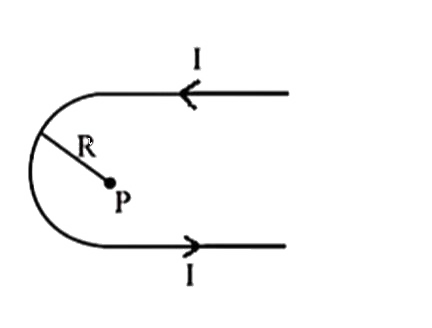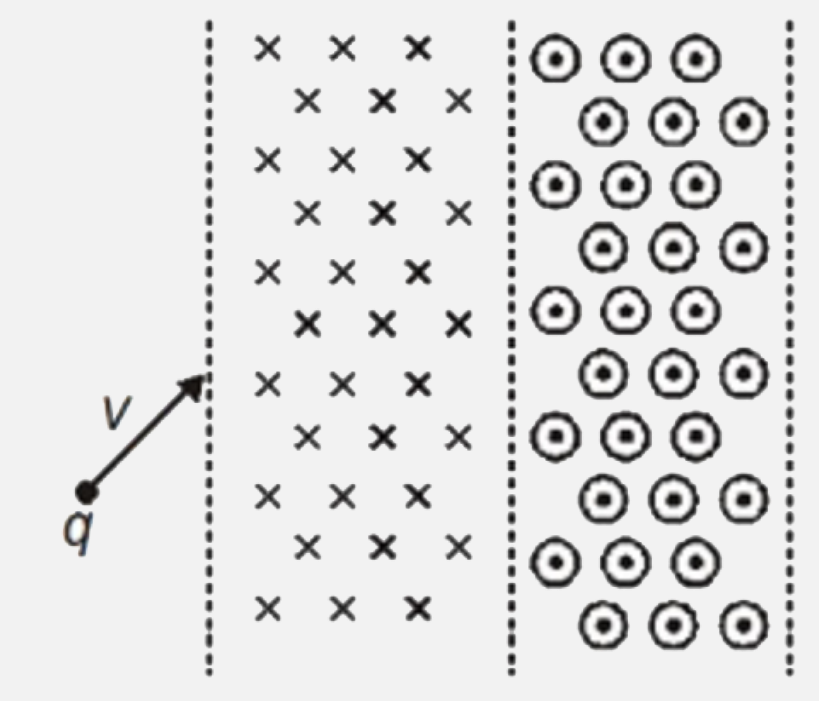A frog can be levitated in a strong magnetic field below it . This is possible because the body of the frog behaves as
a. Paramagnetic
b. Diamagnetic
c. Ferromagnetic
d. Anti ferromagnetic
The correct Answer is:B
To solve the question, "A frog can be levitated in a strong magnetic field below it. This is possible because the body of the frog behaves as:", we need to analyze the properties of different types of magnetic materials and how they interact with magnetic fields.
1. Understand the Concept of Magnetic Materials:
- Magnetic materials can be categorized into different types: paramagnetic, diamagnetic, ferromagnetic, and antiferromagnetic. Each type has a distinct response to magnetic fields.
2. Identify the Behavior of Diamagnetic Materials:
- Diamagnetic materials are characterized by their ability to be repelled by magnetic fields. When placed in a magnetic field, they create an induced magnetic field in the opposite direction, leading to a repulsive force.
3. Consider the Scenario of the Frog:
- In the case of the frog being levitated, it must be experiencing an upward force that counteracts its weight (downward force due to gravity). This upward force must arise from the interaction with the magnetic field.
4. Determine the Required Magnetic Behavior:
- For the frog to be levitated, it needs to be repelled by the magnetic field. This is a characteristic of diamagnetic materials. If the frog's body behaves as a diamagnetic material, it will be repelled by the magnetic field, allowing it to levitate.
5. Evaluate the Options:
- The options provided are paramagnetic, diamagnetic, ferromagnetic, and antiferromagnetic. Since we established that the frog must be repelled by the magnetic field for levitation, the correct answer is diamagnetic.
6. Conclusion:
- Therefore, we conclude that the body of the frog behaves as a diamagnetic material, which allows it to be levitated in a strong magnetic field.
Final Answer:
The body of the frog behaves as a diamagnetic material.
---
- Magnetic materials can be categorized into different types: paramagnetic, diamagnetic, ferromagnetic, and antiferromagnetic. Each type has a distinct response to magnetic fields.
- Diamagnetic materials are characterized by their ability to be repelled by magnetic fields. When placed in a magnetic field, they create an induced magnetic field in the opposite direction, leading to a repulsive force.
- In the case of the frog being levitated, it must be experiencing an upward force that counteracts its weight (downward force due to gravity). This upward force must arise from the interaction with the magnetic field.
- For the frog to be levitated, it needs to be repelled by the magnetic field. This is a characteristic of diamagnetic materials. If the frog's body behaves as a diamagnetic material, it will be repelled by the magnetic field, allowing it to levitate.
- The options provided are paramagnetic, diamagnetic, ferromagnetic, and antiferromagnetic. Since we established that the frog must be repelled by the magnetic field for levitation, the correct answer is diamagnetic.
- Therefore, we conclude that the body of the frog behaves as a diamagnetic material, which allows it to be levitated in a strong magnetic field.
The body of the frog behaves as a diamagnetic material.
Topper's Solved these Questions
- MAGNETISM AND MATTER BOOK - AAKASH INSTITUTE ENGLISHCHAPTER - MAGNETISM AND MATTER EXERCISE - Assignment Section - B Objective Type Questions (One option is correct)
30 Videos
- MAGNETISM AND MATTER BOOK - AAKASH INSTITUTE ENGLISHCHAPTER - MAGNETISM AND MATTER EXERCISE - Assignment Section- C Linked Comprehension Type Questions
3 Videos
- MAGNETISM AND MATTER BOOK - AAKASH INSTITUTE ENGLISHCHAPTER - MAGNETISM AND MATTER EXERCISE - Try Yourself
53 Videos
- LAWS OF MOTIONBOOK - AAKASH INSTITUTE ENGLISHCHAPTER - LAWS OF MOTIONEXERCISE - Assignment (SECTION-D) (Assertion-Reason Type Questions)
15 Videos
- MECHANICAL PROPERTIES OF FLUIDSBOOK - AAKASH INSTITUTE ENGLISHCHAPTER - MECHANICAL PROPERTIES OF FLUIDSEXERCISE - SECTION - J
9 Videos
Similar Questions
Knowledge Check
A strong magnetic field is applied on a stationary electron, then
Amoves in the direction of the field.Bremained stationary.Cmoves perpendicular to the direction of the field.Dmoves opposite to the direction of the field.
frog is amphibian because
View SolutionA magnetic field can be produced by
View SolutionWhat will be the magnetic field at point P in the figure below?

View SolutionCan a charged particle be accelerated by a magnetic field? Can its speed be increased?
View SolutionCan a charged particle be accelerated by a magnetic field. Can its speed be increased?
View SolutionStrong magnetic fields and non-ionising radiations are used in
View SolutionA positive charge enters in the region of transverse magnetic field as shown in figure. Velocity of charge is in such a way that charge passes through both inward and outward magnetic field regions, then possibly correct path of the charge is

View Solution
